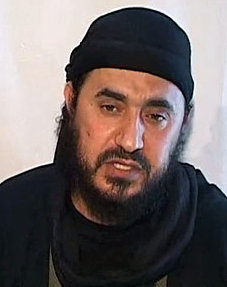
Mark Bowden is an author, journalist, screenwriter, and teacher. His book Black Hawk Down: A Story of Modern War (1999)— an international bestseller that spent more than a year on the New York Times bestseller list — was a finalist for the National Book Award. Bowden also worked on the screenplay for Black Hawk Down, a film adaptation of the book, directed by Ridley Scott.

I read his book and I know he was the only one the Delta Operators opened up with. He also had unprecedented cooperation from the 160th Special Operations Aviation Regiment (Nightstalkers), Mike Durant’s outfit - Sean Linnane
Bowden is also the author of the international bestseller Killing Pablo: The Hunt for the World's Greatest Outlaw (2001), which tells the story of the hunt for Colombian cocaine billionaire Pablo Escobar. Killing Pablo won the Overseas Press Club's Cornelius Ryan Award as the best book in 2001 and is currently being adapted for film, with Bowden again writing the screenplay. He is also the author of Doctor Dealer (1987), Bringing the Heat (1994), Our Finest Day (2002) and Finders Keepers (2002).


The Ploy published in the Atlantic, May 2007, is the inside story of how the interrogators of Task Force 145 cracked Abu Musab al-Zarqawi’s inner circle — without resorting to torture — and hunted down al-Qaeda’s man in Iraq.
It was a macabre moment of triumph. At a closed compound within Balad Air Base in Iraq, behind Jersey barriers 30 feet high, the men and women of the interrogation mill crowded around a stark display: two freshly dead men, bare and supine on the floor.
The audience members were expert interrogators, most of them young, some of them military, others civilian contract workers. They called themselves “gators,” and they were the intelligence arm of Task Force 145, the clandestine unit of Delta Force operators and Navy SEALs who hunt down America’s most-wanted terrorists. For years, their primary target had been Abu Musab al-Zarqawi, the Jordanian leader of the grandly named Al Qaeda in Mesopotamia, the gloating, murderous author of assassinations, roadside bombings, and suicide attacks.
 A U.S. PSYOP leaflet disseminated in Iraq shows al-Zarqawi caught in a rat trap. Text: "This is your future, Zarqawi".
A U.S. PSYOP leaflet disseminated in Iraq shows al-Zarqawi caught in a rat trap. Text: "This is your future, Zarqawi".Together, living and working inside this “Battlefield Interrogation Facility,” the gators had produced leads for the Task Force to chase. They had put in thousands of hours probing, threatening, flattering, browbeating, wheedling, conning, and questioning, doing what Major General William B. Caldwell IV, in his press conference the next day, would call “painstaking intelligence gathering from local sources and from within Zarqawi’s network.” It was, as Caldwell would put it, “the slow, deliberate exploitation of leads and opportunities, person to person,” all striving to answer just one critical question: Where is Zarqawi right now?
 Al-Zarqawi's global terrorist network.
Al-Zarqawi's global terrorist network.This day, June 7, 2006, had finally produced the answer.
And so here he was, stretched out on the floor, stiff, pale, gray, and swollen in death, his “spiritual adviser,” Sheikh al-Rahman, lying alongside him. The men had been killed, along with two women and two small children, when an American F-16 had steered first one and then another 500-pound bomb into the house they occupied in a palm grove in the village of Hibhib. Task Force operators had recovered the men’s bodies and carried them as trophies to Balad. Both now had swaths of white cloth draped across their midsections, but were otherwise naked. Zarqawi’s face—wide, round, and bearded, his big eyes closed, a smear of blood still lurid across his left cheek—was unmistakable from his frequent videotaped boasts and pronouncements. He had been more sought-after than Osama bin Laden, and in recent years was considered the greater threat.
No more. The mood was one of subdued celebration. President Bush would call that day to congratulate the Task Force’s boss, the Joint Special Operations Commander Lieutenant General Stanley McChrystal. For many, the satisfaction was tempered by photos of the dead children. They were hard to look at.
The unit’s female J2, or chief intelligence officer, embraced a young woman in a T-shirt and khaki cargo pants who was part of the two-person gator team that had produced what is known in the trade as “lethal information.”
“I am so glad I chose you for this,” she said.
McChrystal himself came by. A tall, slender, very soldierly-looking man, he was an Army briefer during the Persian Gulf War, but has been infrequently seen or photographed in recent years because of his clandestine post. He and his top commanders stared down at Zarqawi with evident satisfaction. Everyone leaned in to listen.

“Yep,” said one of the colonels, “that’s one dead son of a bitch.”
This is must-read stuff. If this link is down, comment below and I will post the entire article here - Sean Linnane


THANK YOU FOR POSTING THIS. AMERICAN EXCEPTIONALISM IS UNMATCHED.
ReplyDeleteAND LIVES tO THIS DAY DUE TO HEROES AND PATRIOTS SUCH AS TASK FORCE 145.
America is thankful to them.
You left out "Guests of the Ayatollah" which is the event that marked my entry into the military
ReplyDeleteI think Zarqawi is believed to have had three wives. His first wife, Umm Mohammed, was a Jordanian woman who was around 40 years old when Zarqawi died in June 2006
ReplyDeleteBest term paper writing service
The best blog always serves information regarding products ad services after making confirmation. Perhaps Blogger is highly knowledgeable that is the reason information There are very few blog like this one I have read.
ReplyDelete